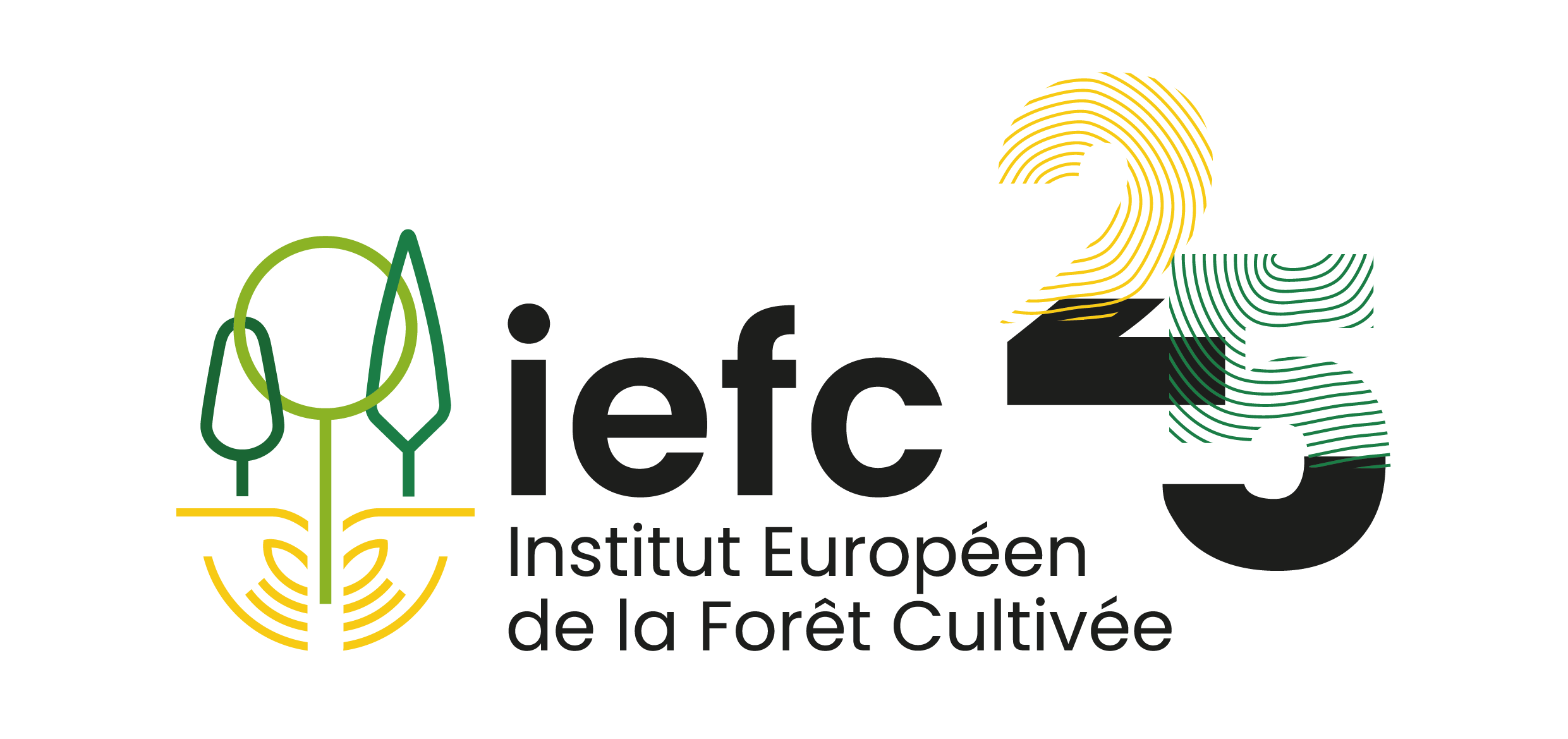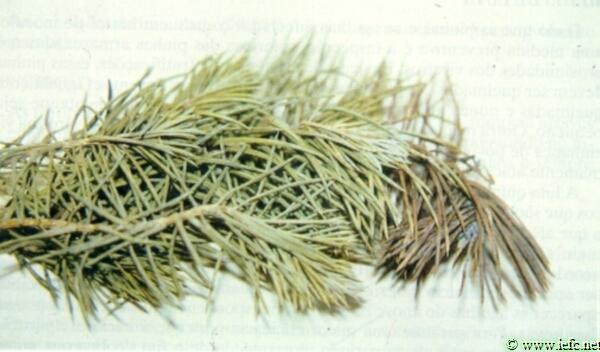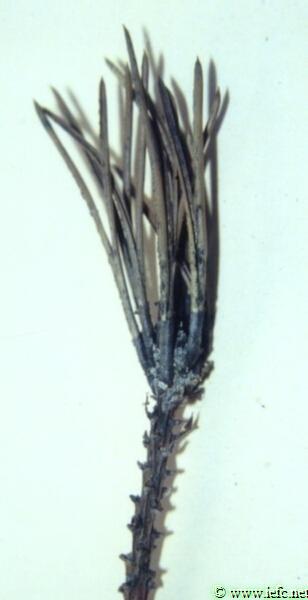Diplodia blight
Sphaeropsis sapinea (Deuteromycota, Coelomycetes).
Synonyms: Diplodia pinea, Granulodiplodia sapinea, Sphaeropsis ellisi
Diplodia dieback
Host tree
All pine species (Pinus) and particularly P. sylvestris, P. nigra, P. radiata P. taeda and P. halepensis, Grand fir (Abies grandis), Norway spruce (Picea abies), Douglas fir (Pseudotsuga menziesii) and Japanese cedar (Cryptomeria japonica).
Identification
- Crooking, reddening and death of the terminal portion of the shoot (Photos 1 and 2).
- In late spring or early summer, appearance of minute black fruiting bodies (pycnidia) on the dead needles, terminal shoots, cones and cankers. Usually needles bearing pycnidia (Photo 3) are ash grey and can be easily detached from the shoot.
- Resin drops appear on the infected shoots and new shoots develop below the infected parts.
- This fungus is sometimes associated with a number of different symptoms including shoot blight or dieback, stem cankers, cone and seed rots, root diseases and blue stain.
- Timber of infected branches and trunk becomes slightly blue.
Damage
- The disease causes considerable damage if infection occurs in successive years, or in epidemic situations.
- It reduces growth and frequently results in tree death. In nurseries it can kill all the seedlings.
Biology
- The fungus overwinters as fruiting bodies on dead needles, branches and cones.
- Spores are released in early spring and new infections occur on buds before new needles start to elongate.
- In late spring or early summer symptoms such as reddening and crooking of the terminal shoot appear.
Risk factors
- High humidity (70% to 80%) is very favourable for disease development.
- Optimum temperature for spore germination is about 24º C.
- Plants are more susceptible when wounds or other stress factors occur.
Pest management
Preventive measurements
- The fungus overwinters on cones and needles, therefore avoid using them as mulch.
- Nurseries should not be established in the vicinity of plantations. It is recommended that diseased seedlings and trees are destroyed. In nurseries irrigation should be done in the morning, so plants will dry quickly.
- On trees, avoid to damage branches.
- On susceptible hosts, pruning should be done in winter.
Curative control
- There are no fungicides allowed in Spain, France or Portugal against this disease.



